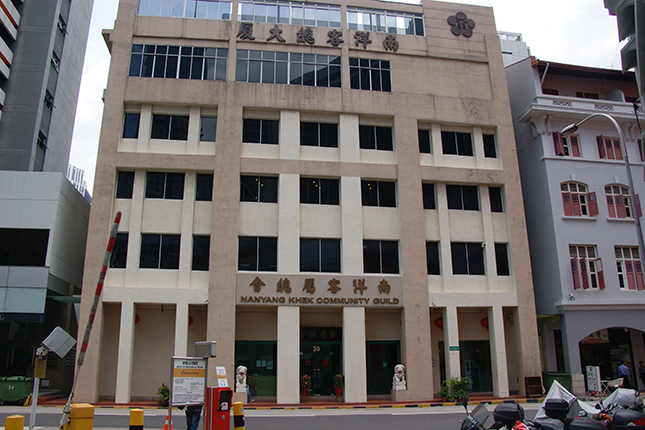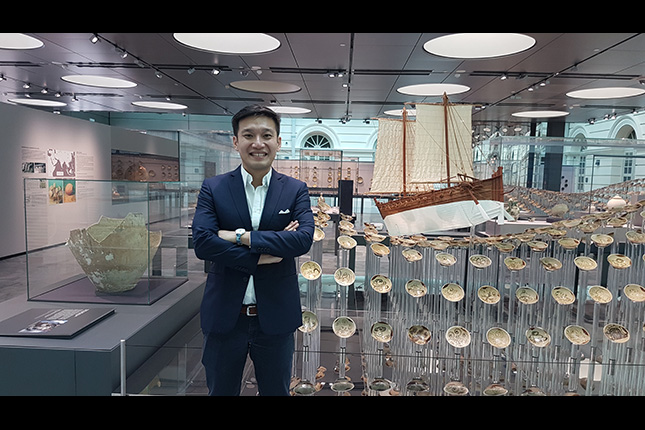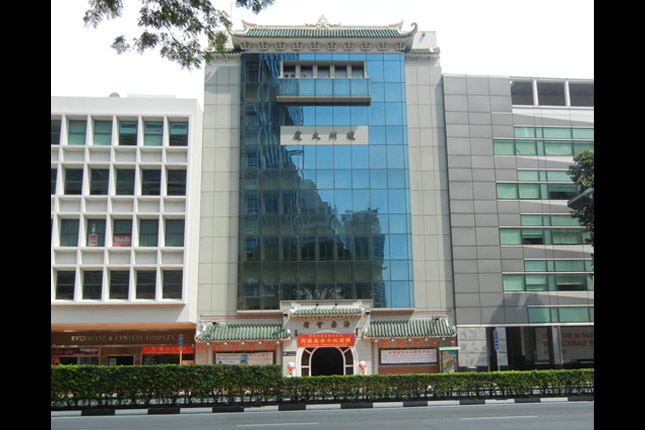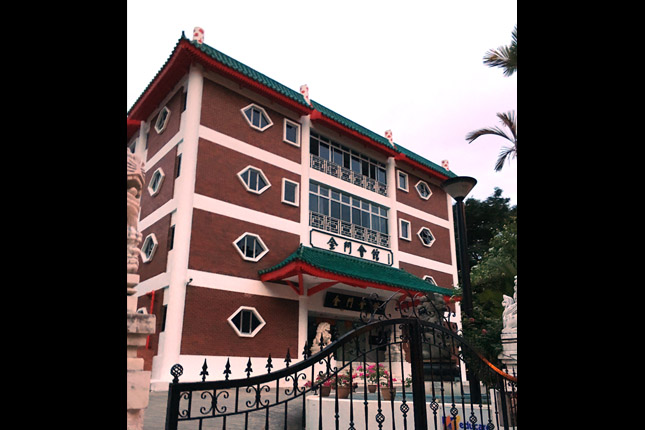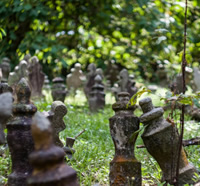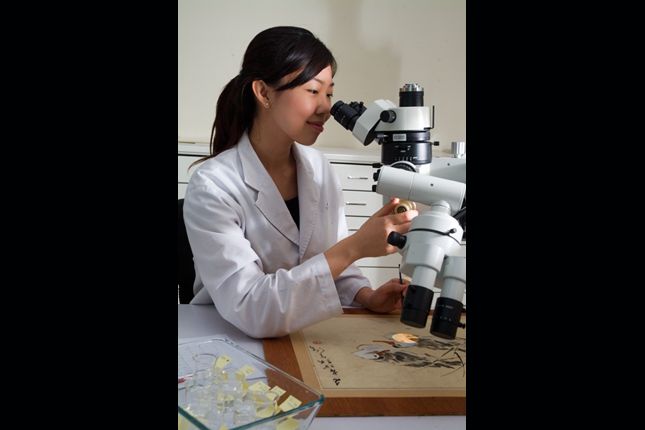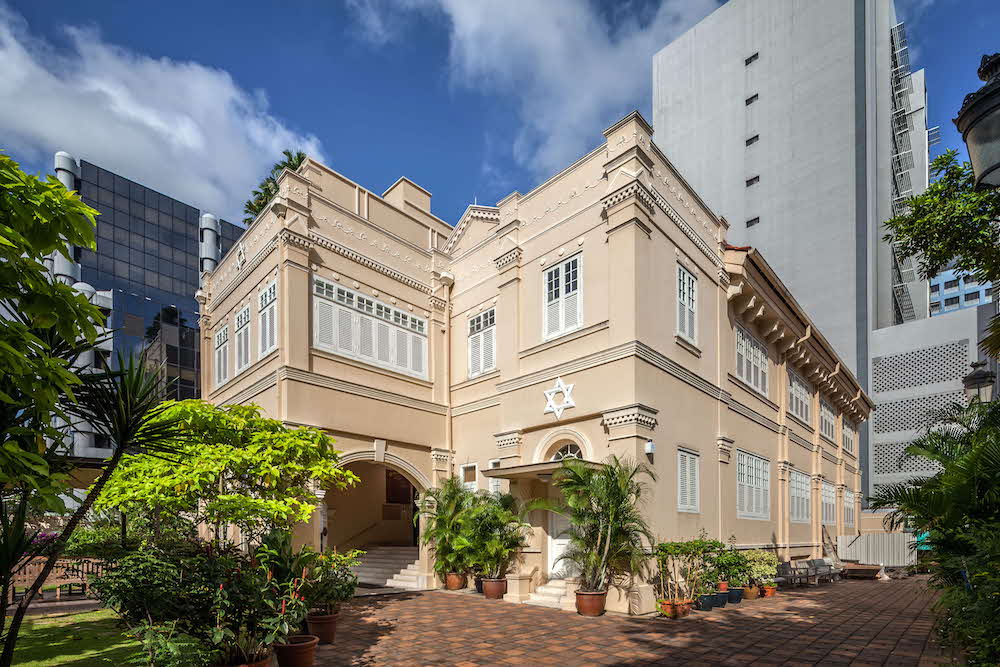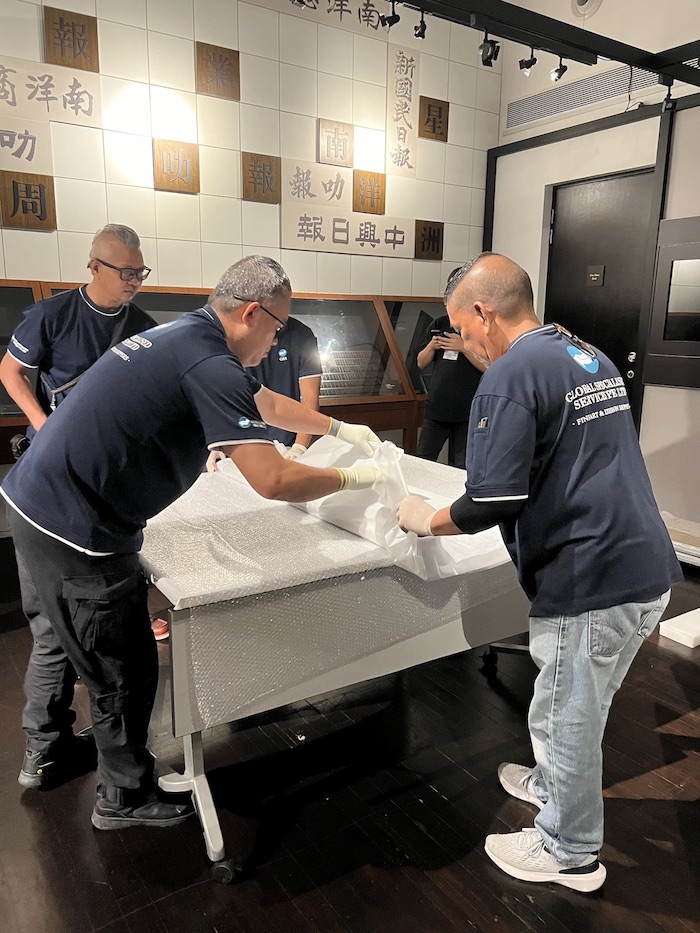Dwarfed by glitzy skyscrapers, it’s easy to miss the Nanyang Khek Community Guild at 20 Peck Seah Street. However, this building is steeped in history, and the land it sits on, even more so.
As one of Singapore’s earliest Chinese cemeteries, Qing Shan Ting was the resting place of the first batch of Chinese settlers – 31 of them whom were said to have settled on the island before Sir Stamford Raffles’ arrival in 1819.
Located in Tanjong Pagar’s Peck Seah Street, Qing Shan Ting was acquired by the British colonial government and demolished in 1907; subsequently, these Chinese pioneers were reinterred at the Hokkien Heng Suah Teng cemetery near Tiong Bahru. The land, however, was left vacant for many years.
Finally, it was decided that a clan association for the Hakka (or Khek) would be built here, to give Hakka immigrants in Singapore a venue where they could feel a sense of belonging. This led to the establishment of the Nanyang Khek Community Guild on 23 August 1929, with Mr Aw Boon-Haw as the chairman. The association promoted cultural education and took care of the well-being of the Hakka population by building schools and libraries.
Though nondescript, much thought was put into the design of this building. The bland outlook of the building conceals a functionalist-universalist impression, which is a subtle reflection of the practical and unsentimental attitude of the community it represents: the Hakka community. It is representative of Singapore’s emerging stages of modern architecture, constructed of modern reinforced concrete and metal frame windows.
While the Nanyang Khek Community Guild was initially set up to unite the Hakka immigrants in Singapore and instil a sense of belonging, many of them decided to settle down in Singapore permanently. The focus of the association’s role has since evolved with time and is now primarily focused on the preservation and promotion of traditional Chinese arts, customs and cultures, especially Hakka cuisine and music.
Buildings and sites featured on Roots.SG are part of our efforts to raise awareness of our heritage; a listing on Roots.SG does not imply any form of preservation or conservation status, unless it is mentioned in the article. The information in this article is valid as of October 2019 and is not intended to be an exhaustive history of the site/building.




